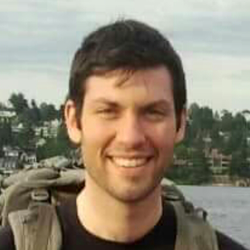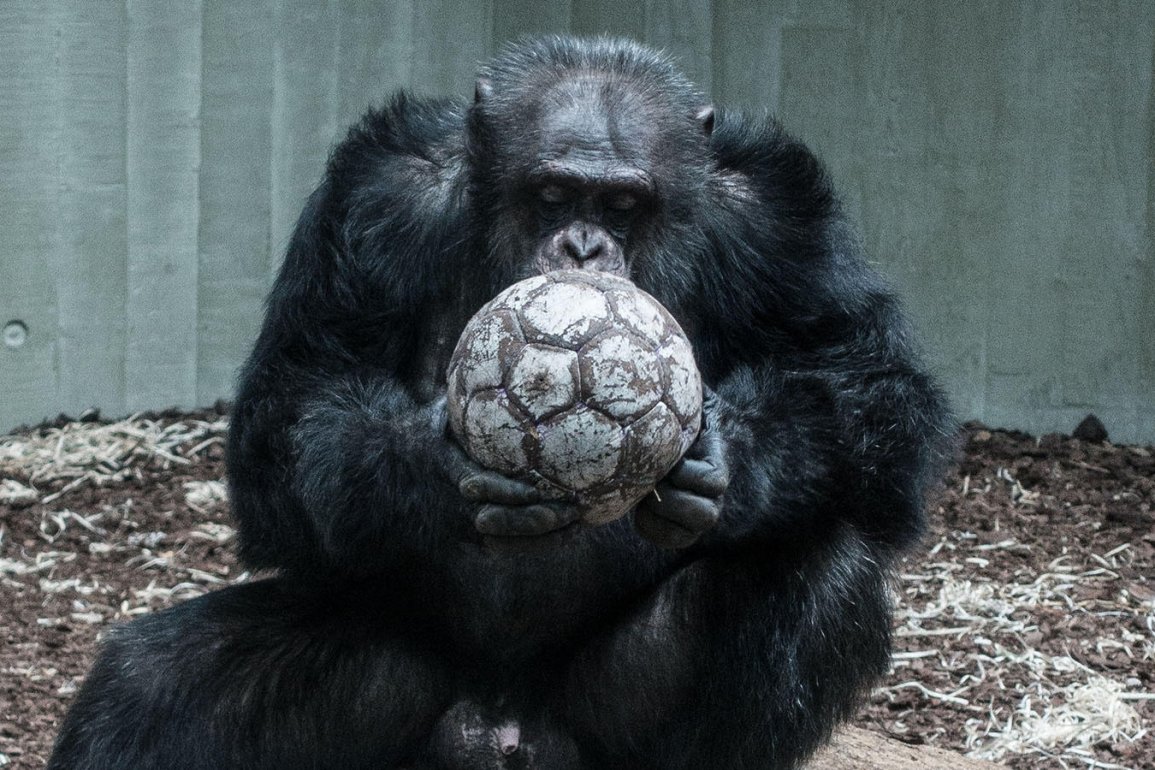By Chris Clark for Enlivening Edge Magazine
We will not tame complexity. At least, not with Fred Laloux’s three breakthroughs to the next stage of organizational consciousness. “We’re talking here about such a different approach to everything about management,” Fred tells me, in a conversation about how the book addresses external pressures facing today’s organizations. “It’s only going to work if you come from within, from a different place.”
What is that different place?
First, what it is not. “Teal” isn’t a complexity management system, nor an organizational promised land. Fred himself doesn’t even use the word Teal as a handle, convenient though it may be, to talk about the shifting paradigm he helped ignite. The future won’t come with a Teal-colored map.
If there is a promised land, you’ll only get there by getting lost.
I, Complexity
When I first sat down to write this article, I started accumulating all kinds of data from case studies and articles to help me understand the nature of complexity. Then I realized I was overdoing it. When it comes to making a case against Teal as a complexity management system, it turns out I don’t need to look any further than you, dear reader.
You: the embodiment of complexity.
The most complex system in the known universe (though it might come as no surprise to your spouse). Science knows less about your brain than it does about literally everything else.
This has implications.
If we are complexity, then it makes sense to ask, how do we manage ourselves? That’s what this article is ultimately about: wandering deliberately away from what we think we know about “I,” and heading towards the unknown inside us. “We have met the enemy, and it is us,” Pogo once famously said. Better get to know ourselves, then, before we fire any more shots across complexity’s bow.
Managing the Hell Out of Ourselves
Yet that proves more difficult to do, the more we try. Our appreciation of the complexity of the human brain grows, the more of its dark corners we examine. To wit, among the scant conclusions science can offer us about the phenomenon of consciousness is that it extends a lot further than the electrical signals lighting up between your ears. Who and what you are might turn out to be the same misguided question; despite what we like to think, the Self as we conceive it is more like a crowd than a single actor. It turns out, whether you’ve ever inhabited a corner office or not, “You” is actually a motley cast of characters managing the hell out of each other most of your life. Depending on your religious context, that sentence might be more truth than metaphor.
So let me ask you, “How are you doing with all that complexity? Have you figured out how to do it well yet?”
Chances are, if you’re anything like me, it’s been a mixed bag.
Most of us, even the enlightened ones, still find themselves involved in some kind of daily conflict trying to get all those different parts to line up. It doesn’t seem to matter how many people download apps on mindfulness; plenty of mindful people still wish they could lose ten pounds. This isn’t a mind thing, or at least, it goes much deeper than that. Look around an Integral conference, and you’ll notice plenty who identify with the later stages of Teal/Yellow consciousness who haven’t quite figured out how to take care of themselves. (I’m one of them.)
 In fact, I suggest taking anyone who claims they’ve gotten a handle on their own complexity with a grain of salt.
In fact, I suggest taking anyone who claims they’ve gotten a handle on their own complexity with a grain of salt.
Complexity is more than mere complication. Complexity defines living systems. Though systems have the appearance of behaving as a whole, it is notoriously difficult (we have only ourselves as an example) for a system to think as itself. Crucially, because all the actors in a system behave as wholes to make up that larger whole, there is never a higher actor who acts upon the system such that it obeys any predefined pattern. Try resisting that slice of pumpkin pie at Thanksgiving and tell me if I’m wrong. It’s true for organizations, and it’s true for you, sitting on the couch afterwards, feeling a little guilty. So who exactly is the “I” who says that they’ve got all this complexity stuff figured out?
What are We Sensing, Really?
Answering that question gets harder the more we discover about our senses. “You” and “Me” are convenient handles we use to refer to the quest for a consistent identity. We are always tempted to oversimplify the complex for the sake of a story that makes us feel better.
Some will say I’m doing so with this article.
Yes, exactly.
This is what we do.
We do it by definition, because despite what our common experience tells us, neuroscience paints a less rosy picture of our ability to know reality. In fact, the very thing we rely on for sensing reality is, in fact, the greatest over-simplifier of them all. Our senses are particularly bad at observation but particularly great at prediction. There’s a reason modern organizations evolved trying to predict the future. We can’t help it. We can’t even sense the present accurately: we aren’t very good sensors at all. The brain is better described as a prediction machine, taking in data and filtering it according to previously-developed schema. It’s very easy to fool. What you perceive has less to do with what is actually there, and more to do with what’s always been there before.
All of this makes it very hard to say with any real clarity “what’s really going on here,” and my intention in mentioning it is to add a little bit of doubt to whatever roadmap you currently use to operate your life. That matters to me because if I can coax you into doubting your roadmap, you might just have a shot at all this self-organization, wholeness, and evolutionary purpose stuff.
“If there’s a part of you that says, I simply cannot play by the old rules, I simply feel too out of integrity… then the conversation is to thicken that, to say, where does that come from? To talk about hopes and longings… only then does it make sense to talk about the practical things.” –Fred Laloux
Roadmaps are the old rules, and we can’t always trust our senses. So what do we depend on, if we can’t trust our maps and we can’t trust our eyes? Can we really lean on something as insubstantial as a longing?
Can we afford not to?
Let’s wander further.
The Danger of Virtue
Lao Tzu says that highest virtue is not virtuous and that is why it is virtuous, and I can’t help but wonder if we could say something similar about organizations. The most structured organization is not structured and that is why it’s organized. It may not make the Tao te Ching, but I think we’re onto something. Tzu also cautioned that as soon as you give something a name, you create its opposite. By naming “task” and “relationship” we create the need for a system that can differentiate the two.
It seems by asking how to manage complexity, we create the problem of needing to manage complexity. At least it seems that way to my wife. We’re still tinkering with our marriage structure, but so far she’s not too thrilled with me as Lead Link. (I wish she was less Green.)
I believe our longings and loves deserve more credit for helping us navigate our inner and outer complexity, and it’s time we began to elevate them in our discourse. Instead of staring out at the horrors of a VUCA world, let’s give higher priority to the systems that help us navigate our own inner complexity (more complex than any system known to science, remember?) and see what we might pull out. You know, some of those big breakthroughs evolution furnished the human species when we were still in our loincloths.
For example, I’d say having a sense of humor seems to be just as valid a requirement for effective collaboration as any complicated role system. Think about a conference room full of people relaxed and laughing. Now think about a group of stony faces sitting through a Holacracy tactical meeting. Which one do you want to join?
So let’s put humor on the list of paleolithic breakthroughs.
Just don’t ask me how to encode it into a governance system.
The Algorithm Our Hearts Know is Possible
I’m a fan of prescriptive self-governance systems in the same way I’m a fan of training wheels on a bike. There are a lot of ways to learn to ride a bike.
Nobody is going around telling everybody that the future is training wheels.
But unfortunately, adopting self-management systems that style themselves as algorithms seem to be the de facto position of many people who consult with organizations going Teal, or create spaces aspiring to the three breakthroughs.
I say this to Fred and he doesn’t agree. “The majority of organizations are developing their own systems,” he says. “They’re figuring out what works for them. With an off-the-shelf system, you still get the sort of top down management thing that I think we’re moving away from.”
Even so, Fred’s sanguine about such options, citing numerous examples of organizations who run well with systems off the shelf. I’m less bullish. So many groups seem to slip into the algorithmic without a second thought. Inevitably, when I question this, I almost always hear some version of the following: “Well Chris, if you don’t like System X, what other governance system do you suggest?”
Well, I get that algorithms can be sexy. I was a computer science major for a few years in University. I’m not immune to the elegance of an equation.
Exhibit A: a recent gathering exploring self-management. Hunting for a question to harvest the learning from a few days of intense Teal-themed exploration, the group came up with this: “What next elegant steps are emerging for us now?” Feeling particularly drawn to that word “elegance,” I wrote it down on a flip chart and put it on a wall. We referred to it for the rest of the day.
It was only later, after the dust of that particular engagement had settled, that I realized that I’d made a huge mistake.
Given the waste and trauma of big clunky Orange bureaucracies, it makes sense that we would be desperate for something with the potential to fast forward us through the difficult territory of letting them go. An algorithm is exactly that: feed your variables into a calculator, and you get a nice clean result. But this is not the point of the quest.
What these patterns called the three breakthroughs are is evidence of a journey. A slow relaxation of the white-knuckle death-grip we have on our control. If you’re looking for elegance, ease, flow, and a happy ending, the three breakthroughs are not going to get you there. They aren’t a prescription for the illness of grit and friction in your organization. And they aren’t the starting point for a new management paradigm.
 If there is a promised land, after all, we can do worse than the Israelites. They only had to wander in the desert for forty years.
If there is a promised land, after all, we can do worse than the Israelites. They only had to wander in the desert for forty years.
“I Got This One in a Shareholder’s Meeting in ‘98…”
If the three breakthroughs aren’t a blueprint for a management paradigm, what are they? I think they’re scars. Evidence of wisdom. You earn them, not by adhering to a model of governance, but by breaking through. Breaking through what? The very insistence on elegance, coherence. Our very resistance to mess. That is the wall complexity offers us. That’s what we’re trying to break through.
Until we’ve left some skin on that wall, we’re going to keep making the same mistakes of previous generations, trying to fit the wholeness of people into an Organization to make it more elegant and efficient and all that,
…rather than creating groups of people who know how to use the mess of human relationships as a creative resource.
Our complexity doesn’t need to fit inside an organization. Our organizations need to fit inside our complexity.
Later in our conversation, Fred tells me about a recent success story: a company making extraordinary profits since shifting to a new management paradigm.
“What was it that led to that success? Was it innovation unleashed by self-management? Shrinking management overhead?”
“I asked the CEO,” said Fred. “And he said he had no idea. Only that if he had to guess, he said he wouldn’t point to one thing. It was one thousand things. We have this saying, death by a thousand cuts. This is the opposite of that.”
A Treacherous Embrace
If all else fails, maybe the best evidence I can propose for why the current “state of the art” needs to look deeper for a response to complexity is simply my own sense. Take it with a grain of salt, remember–but this is what I’m sensing: not enough of our complexity–yours or mine–is welcome yet in our conversation.
My personal response is a quest. How can we embrace the monster of complexity rather than try to tame it?
What if our so-called “lower selves,” those monsters threatening to spoil our team momentum and take us off-topic, are really heralds of possibility? It seems to me that when it comes to love, nothing is really off-topic. And whatever you think of love belonging as a cornerstone of an organization, you have to hand it to Eros, Philio, and the rest of their buddies: they’ve churned out a remarkably resilient bunch of apes. “Sapiens” aren’t exactly a niche market.
If at the word love your “Green” alarm is going off, I understand. Please return to the bunker, enter the numbers, push the button, and come back.
Because I’m not suggesting we abandon the search for scalable systems for handling complexity. I’m saying the seeds for that system, the rules for that game, are already among us. I’m trying to convince you that it’s important we not keep playing the same old management game by building a better mouse-trap called Teal. But we all have to go through the wall somehow. Ironically, I come up against mine whenever I fail to embrace our collective false starts and missteps. Still leaving skin on that wall.
Meanwhile, sensing the need for something more, a few friends and I have been experimenting. What happens when a group extends welcome to whatever emerges? By that I mean, when something comes up: a scary emotion, a sudden deflation of energy, a tightening in the chest, or we notice that someone has been silently seething in a corner for twenty minutes—what happens if we welcome it? Invite those thoughts and feelings into the discussion—no matter how “off-topic” or frightening they appear? What happens if we bring our judgments and projections about one another into center stage?
Here’s what happens: you touch each other. I mean really, really touch each other—in those places that you thought were too painful to reveal. You bring these things to the surface and you make them available and, if the group is really committed to its agreement of welcome, you discover you aren’t alone and–surprise–the world isn’t coming to an end. Instead you get some needs met. Needs a part of you never thought could be met, ever, by anyone. And you fall in love with each other.
Here’s where that experiment has been taking place: http://resonancepath.org
What can happen when a group of people have fallen in love with each other? Well, nearly anything. Because at that point the “mess” doesn’t get in the way of the Big Purpose. Instead, Big Purposes just keep emerging from of the mess. Complexity gives birth to creativity. From the strength of our connections a super-creative, super-resilient field is created. And it gets still more complex. That’s what happens when diversity increases in a system. It gets more complex still, more interconnected, more creative… more.
So one more thought: when you watch how kids play, you notice that they’re very good at creating from this space. Their game changes constantly. The rules change, get more complex on the fly. One minute you’re playing chase. The next you’re playing the floor is lava. I think we could do worse than follow their example. Our own example, after all.
So to sum up, let’s see if we can try these three breakthroughs for a while: a sense of humor, a willingness to get up to our necks in one another’s mess, and play.
I don’t know how this applies to big corporate organizations because nobody does, yet. I only know that I’ve been a member of that rare team that bonded so well with each other that years after we disbanded, we’re still sending each other pictures of Saturday’s paella. I’d work again with them in a heartbeat, and it wouldn’t matter much what we were doing.
I’ve worked with people who delivered on a number of projects with great enthusiasm and success, while everything around us changed on an almost weekly basis. Talk about complexity–the industry was changing, technology was changing, and we had a new manager in the churn-and-burn political game every six months. We had no idea what was coming at us next: a re-org, a layoff, a new boss, an office move, a project cancellation or reassignment.
In fact, as I sit here, even though I know something significant was accomplished and all the lights on our GM’s dashboard were green, I can’t remember exactly what we did together. I can only tell you that in the end, it didn’t really matter. We just enjoyed each other too much.

Chris Clark partnered with Frederic Laloux and others to create the Reinventing Organizations Wiki, and Discourse sites. He lives in the shadow of the mountains near Seattle, Washington, helping guide organizations near and far transitioning to Teal structures and practices.





“Think about a conference room full of people relaxed and laughing. Now think about a group of stony faces sitting through a Holacracy tactical meeting. Which one do you want to join?”
Whether it’s a well-intentioned joke or not, we, at Enlivening Edge, are quite relaxed at our Holacracy tactical meetings, and laughter too is happening. By naming “relaxed and laughing” on one hand and “Holacracy tactical meeting” on the other hand, the author creates the need for a conflict that can put the two hands in opposition.
Saying “Our organizations need to fit inside our complexity” is like saying the tissues of our body need to fit inside the cells that they are made of.
“What happens if we bring our judgments and projections about one another into center stage?” asks the author. Well, it depends on context, isn’t it? He says, “I don’t know how this applies to big corporate organizations…” Well probably not too well, and I would add, it wouldn’t apply well to organizations of any size, where the center stage is creating and delivering products and services.
Of course, no human organization should exclude human emotions. That’s why Holacracy suggests the creation of a “tribe space” so that those ego-induced judgments and projections don’t destroy the center stage where the work is being done. That’s why Encode.org‘s successful For-Purpose Enterprise model differentiates between three containers: Organization (where the work is being done), Company (legal and financial matters) and Association (the people and interpersonal matters).